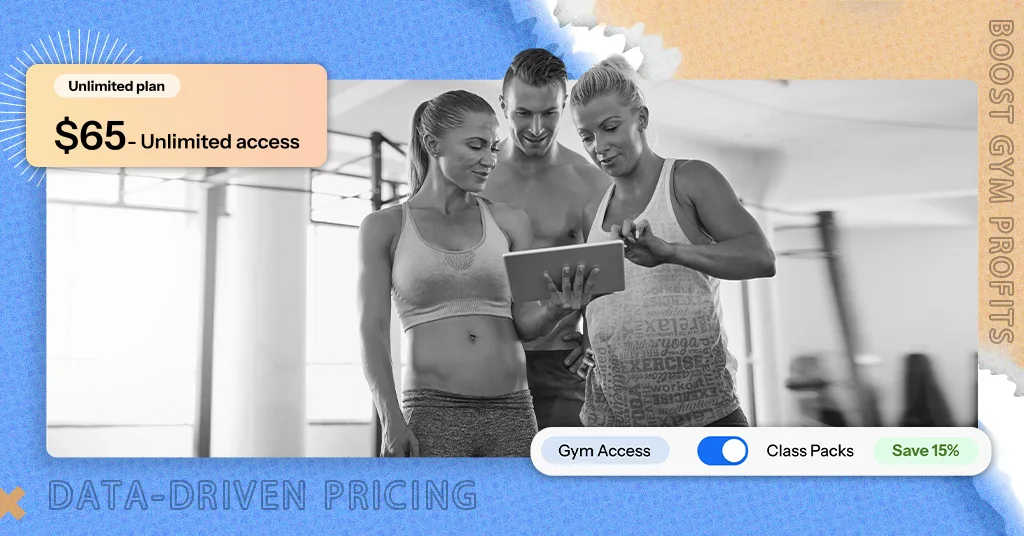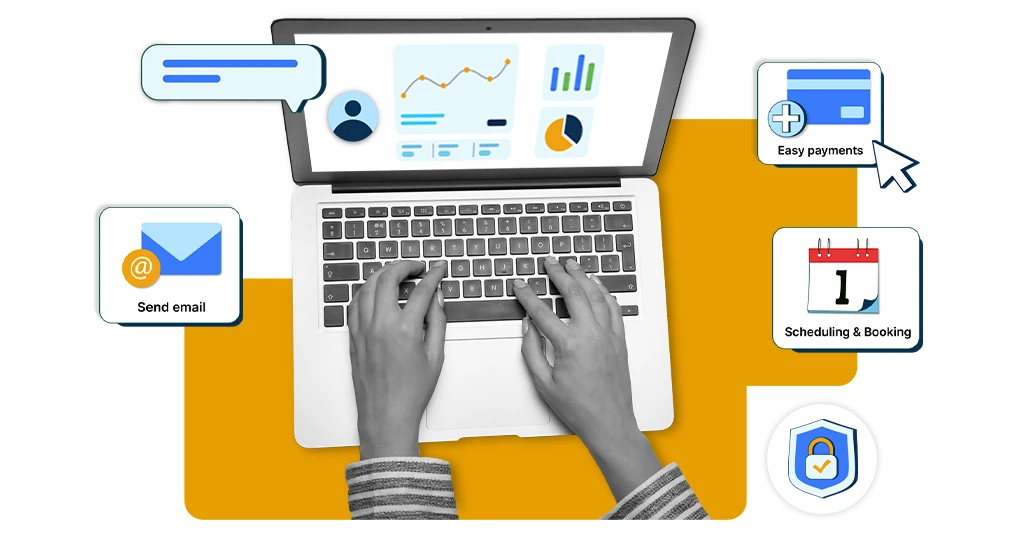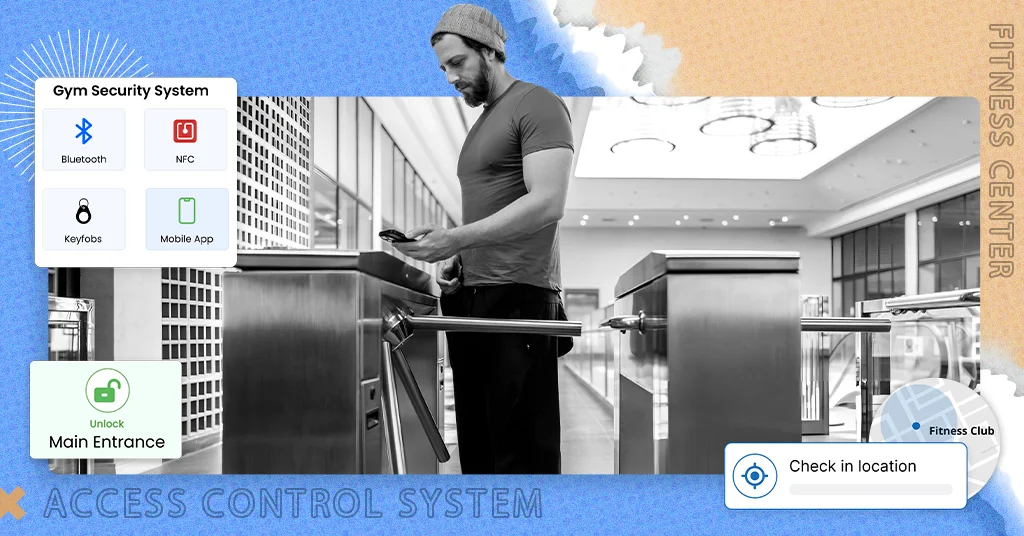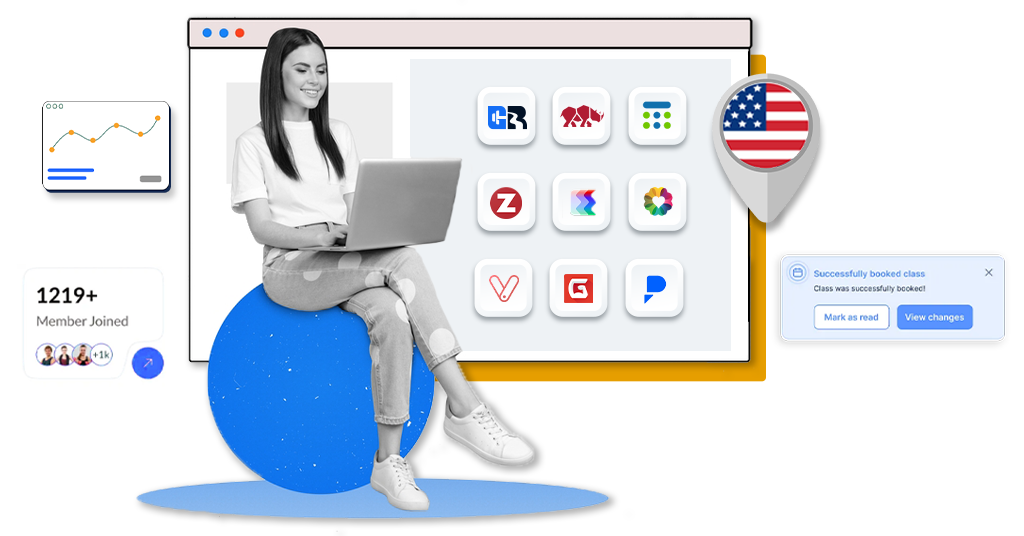Most gym owners struggle with one persistent question: “How much should I charge for my services?”
Set the price too low, and your revenue suffers. Set it too high, and members walk away. It is a balancing act that leaves many gym owners second-guessing themselves month after month.
But thankfully, you don’t have to guess anymore. With data-driven pricing, you can make smarter decisions that boost your bottom line, without overcomplicating your business.
Let’s dive into how you can use data to set fair, flexible, and profitable pricing that works for you and your members.
Flat pricing sounds fair, but it is not always smart
Many gyms default to a flat monthly rate. It is simple to manage, easy to promote, and feels fair at first glance. But the reality is, not all members are at the same level.
Some show up 6 days a week and take every class they can. Others swing by twice a month and only use the treadmill. A flat fee means you are treating both groups as equals when they are clearly not using the same value.
That means you are potentially overcharging low-usage members (who may cancel due to perceived lack of value) and undervaluing high-usage members (who would be willing to pay more for their experience).
It is a hidden revenue leak.
Data-driven pricing: what it really means?
Data-driven pricing is the practice of using measurable insights about your members to determine pricing strategies. Instead of relying on intuition or competitor benchmarks, you analyze actual behavior, like attendance, preferences, and usage patterns, to decide what to charge and how.
Think of it as tailoring your pricing to your gym’s true demand. When done right, this strategy leads to:
- Higher revenue per member.
- Increased retention and satisfaction.
- More targeted and personalized offerings.
And here is the best part: not just for big fitness chains anymore.
Even independent gyms and boutique studios can now use simple tools to access valuable member data and take action.
Also Read: The Role Of Data And Analytics In Decision-Making For Gym Owners
What kind of data should you track?
Not all data is equally valuable. Focus on metrics that tell you how people engage with your gym.
Here are the key data points to monitor:
| Data type | What it tells you |
| Member check-ins | Who visits and how frequently? |
| Time of visits | Your gym’s peak and off-peak hours. |
| Class attendance | Which classes are most/least popular? |
| Membership duration | Loyalty trends and high-risk cancellation windows. |
| Cancellation reasons | Why members are leaving (pricing, Schedule, value?) |
| Add-on purchases | Who buys extra services (PT sessions, merch, etc) |
| Referral activity | Who brings in new members, potential for incentives? |
Even a simple look at your check-in data and class bookings can reveal patterns you might be missing.
Let’s see this in action (a simple example)
Imagine you run a mid-sized gym with around 300 members. You have been charging a flat rate of $55 per month for years. Everything seems fine until you start digging into your usage data.
You discover:
- 60% of members come only in the evening (5 PM to 8 PM)
- Morning classes often have 2 or 3 participants only.
- Some classes are always full while others are nearly empty.
Armed with this insight, you decide to restructure your pricing:
- $65 Peak-Hour Membership: includes access to the gym and classes after 5 PM.
- $45 off-peak membership: Access limited to mornings and early afternoons.
- Add-on class packs: 5 or 10 session packages for specialty classes.
Within a month, several members switch to plans that better match their schedules. Others opt into class packs they previously ignored. Your average monthly revenue increases by 15%, without adding a single new service.
That’s the power of data.
Pricing models you can explore (and how they work)
Here is how you can apply data insights into actual pricing strategies that work.
- Time-based pricing
Let members choose access based on time of day. Peak hours are typically more valuable and can be priced slightly higher.
For example:
- $70 for 24/7 access.
- $50 for access during off-peak hours (10 AM to 3 PM)
This spreads out gym usage and keeps crowding under control while offering a cheaper option for flexible members.
- Tiered memberships
Offer different membership “levels” based on usage. This is great for accommodating both occasional and frequent users.
For example:
- Basic plan: 4 visits per month – $30
- Standard plan: 8 visits per month – $45
- Unlimited plan: Unlimited access – $65
People love flexibility, and when they start seeing the gym as a great value, they are less likely to cancel.
- Usage-based or pay-as-you-go
Ideal for people who don’t want monthly commitments. This model works well for ClassPass-style drop-in users or occasional gym-goers.
For example:
- Drop-in gym access: $8 per session.
- Class pack (5 classes): $35
- Personal training add-on: $25 per session.
You will be surprised by how many people prefer this model once they see it is available.
- Hybrid or add-on mModels
Let members build their own plan by paying for what they need: classes, guest passes, or PT sessions. It is like a “buffet” of gym services.
For example:
- Base gym access: $40 per month.
- Add unlimited yoga: +$10 per month.
- Add 2 PT sessions: +$30 per month.
It gives members a sense of control and increases the perceived value of every add-on.
Tech makes this easier (no spreadsheets needed)
All this sounds great, but how do you track visit data, peak hours, class trends, and revenue? That is where gym management platforms come in.
With solutions like GymRoute, you don’t need to gather and sort data manually. These tools do it for you. They track check-ins, class attendance, payments and upgrades, member behavior, and retention signals.
Even better? Some systems help automatically recommend pricing adjustments based on trends, turning insights into action with just a few clicks.
So, you spend less time managing spreadsheets and more time making decisions that grow your business.
The big benefits of data-driven pricing
Here is what you unlock when you let your data guide your pricing:
- More revenue: You maximize income by charging based on usage and value.
- Happier members: People pay for what they actually use, and it feels fair.
- Lower churn: Members who feel like they are getting their money’s worth are more likely to stay.
- Smarter scaling: your gym becomes easier to manage and grow over time.
Gyms that use data-based pricing report a 10 to 25% increase in revenue without any major operational changes. It is one of the easiest (and smartest) moves you can make.
Stop guessing, start growing
Your pricing shouldn’t be a shot in the dark. It should be a strategy rooted in what is really happening in your gym.
And the best part? You already have the data. All you need is the right mindset and the right tools to use it.
By switching to a data-driven approach, you turn confusion into clarity and pricing into profit.
Want to try this for yourself?
GymRoute helps fitness businesses use their own data to build smarter pricing, boost member satisfaction, and increase retention. It is built for gym owners who want more growth with less guesswork.
So what are you waiting for? Check out GymRoute and see how data can fuel your gym’s next big leap.






